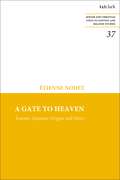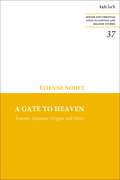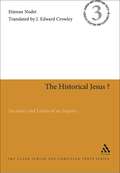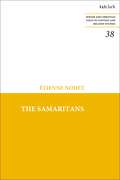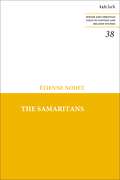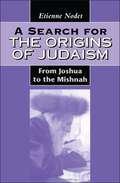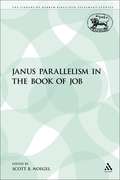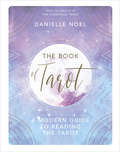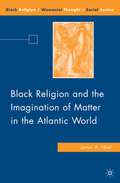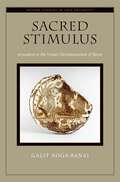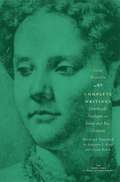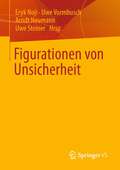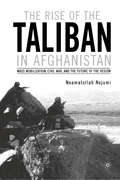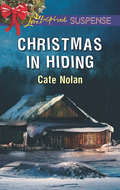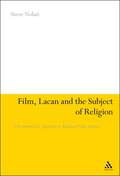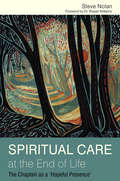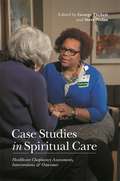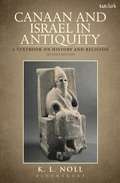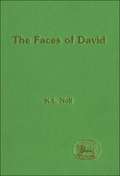- Table View
- List View
A Gate to Heaven: Essenes, Qumran: Origins and Heirs (Jewish and Christian Texts)
by Etienne NodetEtienne Nodet proposes that Qumran functioned as a pilgrimage site for the Essenes from the 1st century BC onwards. Nodet suggests that the Essenes were scattered everywhere within Palestine in rural communities and that they used to commemorate a renewal of the early Israelites' entrance into the Promised Land, after crossing the Jordan river and celebrating Passover at Gilgal with Joshua, Moses' heir. The Essene dead were moved to be buried at Qumran in a well-organized graveyard, as the place was deemed to be a kind of gate to heaven.Nodet shows how the Jewish movement of the Essenes did not did not disappear after the war in 70 CE, rather its customs had a strong influence upon early Christianity and Rabbinic Judaism. The chapters of this book examine the Essenes in the period after the war in Jerusalem, showing how this community developed and its longer term significance. This is linked to the texts of the New Testament, to the writings of Josephus and to the Qumran community's own documents, the Dead Sea Scrolls.
A Gate to Heaven: Essenes, Qumran: Origins and Heirs (Jewish and Christian Texts)
by Etienne NodetEtienne Nodet proposes that Qumran functioned as a pilgrimage site for the Essenes from the 1st century BC onwards. Nodet suggests that the Essenes were scattered everywhere within Palestine in rural communities and that they used to commemorate a renewal of the early Israelites' entrance into the Promised Land, after crossing the Jordan river and celebrating Passover at Gilgal with Joshua, Moses' heir. The Essene dead were moved to be buried at Qumran in a well-organized graveyard, as the place was deemed to be a kind of gate to heaven.Nodet shows how the Jewish movement of the Essenes did not did not disappear after the war in 70 CE, rather its customs had a strong influence upon early Christianity and Rabbinic Judaism. The chapters of this book examine the Essenes in the period after the war in Jerusalem, showing how this community developed and its longer term significance. This is linked to the texts of the New Testament, to the writings of Josephus and to the Qumran community's own documents, the Dead Sea Scrolls.
The Historical Jesus?: Necessity and Limits of an Inquiry (Jewish and Christian Texts)
by Etienne NodetA very active member of the École Biblique et Archéologique Française de Jérusalem that has done so much to introduce historical criticism into the believer's reading of the Scriptures, Étienne Nodet proposes here a beautiful history book. Certainly, in putting forward to the general public an accessible synthesis of scholarly and dense works carried out successfully in these recent years, he spares the reader the ponderousness of a critical apparatus and consigns to Appendix I the citation of his principal ancient sources. He invites the reader to a fascinating effort of the intelligence and of the heart that constitutes the profession of a historian: documentation, appraisal of documents, examining witnesses, comparisons, inductions and deductions; even textual criticism is sometimes called upon: for example, he is one of those who postulates the existence of a "Western Text" of the New Testament, and draws interesting hypotheses from its comparison with the standard text of the critical editions. In a second appendix, not found in the original French work, he presents a new translation of Josephus' War of the Jews for hints of authentic non-Christian evidence about Jesus and John the Baptist. Beginning with the Gospel accounts of the infancy of Jesus, the author opens up for us the main features of the life of Jesus in a reading that oscillates between the questioning of the historical reference and the penetrating understanding of their verbal expression. Finally, there is the very suggestive sketch of the figure of James, "the brother of the Lord" and the head of the early Jerusalem church.
The Samaritans (Jewish and Christian Texts)
by Etienne NodetEtienne Nodet examines the Samaritans and their religion, using Jewish and Christian sources, including rabbinic literature and the latest archaeology. Nodet tells the story of the Samaritans and their religion, showing how they were faithful to a classical form of monotheism.Nodet traces the Samaritan story from more recent to more ancient times. He begins by looking at the importance of the Samaritans in the time of Josephus and the New Testament, taking in the area formed by Galilee, Samaria, and Judea and recognizing how this corresponds approximately to Canaan at the time of Joshua, between the Jordan and the Mediterranean. He then examines the account of 2 Kings 17, which shows the Samaritans as descendants of the settlers sent by the Assyrians, who were initiated to a certain Yahwism after the fall of the kingdom of Israel (North) in 721 BC. Next Nodet looks at the time of the Maccabean crisis, when the Samaritans separated from the Jews, showing how before then there was a peaceful coexistence. Finally, Nodet turns to the Persian period, showing how after the return from exile there was a restoration of the Babylonian-derived form of religion, which the local Israelites (including the Samaritans) opposed. Nodet contends that, as such, the Samaritan religion, with its succession of high priests up to the present day, and is of 'immemorial permanence', linking to the earliest worship of YHWH in Israel.
The Samaritans (Jewish and Christian Texts)
by Etienne NodetEtienne Nodet examines the Samaritans and their religion, using Jewish and Christian sources, including rabbinic literature and the latest archaeology. Nodet tells the story of the Samaritans and their religion, showing how they were faithful to a classical form of monotheism.Nodet traces the Samaritan story from more recent to more ancient times. He begins by looking at the importance of the Samaritans in the time of Josephus and the New Testament, taking in the area formed by Galilee, Samaria, and Judea and recognizing how this corresponds approximately to Canaan at the time of Joshua, between the Jordan and the Mediterranean. He then examines the account of 2 Kings 17, which shows the Samaritans as descendants of the settlers sent by the Assyrians, who were initiated to a certain Yahwism after the fall of the kingdom of Israel (North) in 721 BC. Next Nodet looks at the time of the Maccabean crisis, when the Samaritans separated from the Jews, showing how before then there was a peaceful coexistence. Finally, Nodet turns to the Persian period, showing how after the return from exile there was a restoration of the Babylonian-derived form of religion, which the local Israelites (including the Samaritans) opposed. Nodet contends that, as such, the Samaritan religion, with its succession of high priests up to the present day, and is of 'immemorial permanence', linking to the earliest worship of YHWH in Israel.
A Search for the Origins of Judaism: From Joshua to the Mishnah (The Library of Hebrew Bible/Old Testament Studies)
by Etienne NodetTranslated by J. Edward Crowley. This radical reconstruction of the origins of Judaism starts by observing that Josephus's sources on the early history of Israel do not agree with the Bible and that the oldest rabbinic traditions show no sign of a biblical foundation. Another interesting question is raised by the Samaritan claim, at the time of Antiochus Epiphanes, that they had only recently received the Sabbath from the Jews. From such details, Nodet creates a comprehensive line of argument that reveals two major sources of Judaism, as symbolized in the subtitle of his work: Joshua was the one who established locally in writing a statute and a law at the Shechem assembly, while the Mishnah was the ultimate metamorphosis of traditions brought from Babylon and combined with Judaean influences.
Janus Parallelism in the Book of Job (The Library of Hebrew Bible/Old Testament Studies)
by Scott B. NoegelNoegel here examines instances of Janus parallelism in the Hebrew Bible with particular attention to the book of Job, and with excursuses on the device in other ancient Near Esatern literatures. The author finds the punning device integral to the book of Job, serving a referential function. Within the context of dialogue and debate, the polysemous statements resemble a poetry contest among the participants (Job, his friends, and Elihu). The book also treats the relationship between wordplay and wisdom literature; polysemy as preserved in the Greek, Aramaic, Latin, and Syriac translations; and the impact of Janus parallelism on textual criticism and the unity of the book of Job.
The Book of Tarot: A Modern Guide to Reading the Tarot
by Danielle NoelUnlock your magic.The Tarot is an empowering and wise tool that has been used for generations. Guided by creator of the Starchild Tarot, Daniel Noel, The Book of Tarot introduces the Tarot to a new audience of readers who are rediscovering the cards as a means of self-discovery, meditation and reflection.Beautifully designed and easy-to-navigate, learn the full meaning behind the cards, how to handle your deck, unlock its magic and use it to set personal goals and intentions with clarity and confidence. This book can be used with all decks, but features images of the stunning Starchild Tarot throughout. 'I have been a huge fan of Danielle Noel's Starchild Tarot ever since I discovered her work, and to have her tarot wisdom distilled into this beautiful book is a dream come true… Danielle's modern approach and dreamy artwork make it relevant for a new generation of Now Age seekers.' - Ruby Warrington, Founder of The Numinous and author of Material Girl, Mystical World'This book lays the groundwork for a lifelong exploration of the Tarot.' Gabriela Herstik, 'Ask a Witch' columnist at NYLON
Black Religion and the Imagination of Matter in the Atlantic World (Black Religion/Womanist Thought/Social Justice)
by J. NoelThis book situates the study of Black Religion within the modern temporal and historical structures in the Atlantic World. It describes how black people and Black Religion made a phenomenological appearance in modernity simultaneously and were signified in the identity formation of whites and their religion.
Sacred Stimulus: Jerusalem in the Visual Christianization of Rome (Oxford Studies in Late Antiquity)
by Galit Noga-BanaiSacred Stimulus offers a thorough exploration of Jerusalem's role in the formation and formulation of Christian art in Rome during the fourth and fifth centuries. The visual vocabulary discussed by Galit Noga-Banai gives an alternative access point to the mnemonic efforts conceived while Rome converted to Christianity: not in comparison to pagan art in Rome, not as reflecting the struggle with the emergence of New Rome in the East (Constantinople), but rather as visual expressions of the confrontation with earthly Jerusalem and its holy places. After all, Jerusalem is where the formative events of Christianity occurred and were memorialized. Sacred Stimulus argues that, already in the second half of the fourth century, Rome constructed its own set of holy sites and foundational myths, while expropriating for its own use some of Jerusalem's sacred relics, legends, and sites. Relying upon well-known and central works of art, including mosaic decoration, sarcophagi, wall paintings, portable art, and architecture, Noga-Banai exposes the omnipresence of Jerusalem and its position in the genesis of Christian art in Rome. Noga-Banai's consideration of earthly Jerusalem as a conception that Rome used, or had to take into account, in constructing its own new Christian ideological and cultural topography of the past, sheds light on connections and analogies that have not necessarily been preserved in the written evidence, and offers solutions to long-standing questions regarding specific motifs and scenes.
Sacred Stimulus: Jerusalem in the Visual Christianization of Rome (Oxford Studies in Late Antiquity)
by Galit Noga-BanaiSacred Stimulus offers a thorough exploration of Jerusalem's role in the formation and formulation of Christian art in Rome during the fourth and fifth centuries. The visual vocabulary discussed by Galit Noga-Banai gives an alternative access point to the mnemonic efforts conceived while Rome converted to Christianity: not in comparison to pagan art in Rome, not as reflecting the struggle with the emergence of New Rome in the East (Constantinople), but rather as visual expressions of the confrontation with earthly Jerusalem and its holy places. After all, Jerusalem is where the formative events of Christianity occurred and were memorialized. Sacred Stimulus argues that, already in the second half of the fourth century, Rome constructed its own set of holy sites and foundational myths, while expropriating for its own use some of Jerusalem's sacred relics, legends, and sites. Relying upon well-known and central works of art, including mosaic decoration, sarcophagi, wall paintings, portable art, and architecture, Noga-Banai exposes the omnipresence of Jerusalem and its position in the genesis of Christian art in Rome. Noga-Banai's consideration of earthly Jerusalem as a conception that Rome used, or had to take into account, in constructing its own new Christian ideological and cultural topography of the past, sheds light on connections and analogies that have not necessarily been preserved in the written evidence, and offers solutions to long-standing questions regarding specific motifs and scenes.
Complete Writings: Letterbook, Dialogue on Adam and Eve, Orations (The Other Voice in Early Modern Europe)
by Isotta NogarolaRenowned in her day for her scholarship and eloquence, Isotta Nogarola (1418-66) remained one of the most famous women of the Italian Renaissance for centuries after her death. And because she was one of the first women to carve out a place for herself in the male-dominated republic of letters, Nogarola served as a crucial role model for generations of aspiring female artists and writers. This volume presents English translations of all of Nogarola's extant works and highlights just how daring and original her convictions were. In her letters and orations, Nogarola elegantly synthesized Greco-Roman thought with biblical teachings. And striding across the stage in public, she lectured the Veronese citizenry on everything from history and religion to politics and morality. But the most influential of Nogarola's works was a performance piece, Dialogue on Adam and Eve, in which she discussed the relative sinfulness of Adam and Eve—thereby opening up a centuries-long debate in Europe on gender and the nature of woman and establishing herself as an important figure in Western intellectual history. This book will be a must read for teachers and students of Women's Studies as well as of Renaissance literature and history.
Complete Writings: Letterbook, Dialogue on Adam and Eve, Orations (The Other Voice in Early Modern Europe)
by Isotta NogarolaRenowned in her day for her scholarship and eloquence, Isotta Nogarola (1418-66) remained one of the most famous women of the Italian Renaissance for centuries after her death. And because she was one of the first women to carve out a place for herself in the male-dominated republic of letters, Nogarola served as a crucial role model for generations of aspiring female artists and writers. This volume presents English translations of all of Nogarola's extant works and highlights just how daring and original her convictions were. In her letters and orations, Nogarola elegantly synthesized Greco-Roman thought with biblical teachings. And striding across the stage in public, she lectured the Veronese citizenry on everything from history and religion to politics and morality. But the most influential of Nogarola's works was a performance piece, Dialogue on Adam and Eve, in which she discussed the relative sinfulness of Adam and Eve—thereby opening up a centuries-long debate in Europe on gender and the nature of woman and establishing herself as an important figure in Western intellectual history. This book will be a must read for teachers and students of Women's Studies as well as of Renaissance literature and history.
Complete Writings: Letterbook, Dialogue on Adam and Eve, Orations (The Other Voice in Early Modern Europe)
by Isotta NogarolaRenowned in her day for her scholarship and eloquence, Isotta Nogarola (1418-66) remained one of the most famous women of the Italian Renaissance for centuries after her death. And because she was one of the first women to carve out a place for herself in the male-dominated republic of letters, Nogarola served as a crucial role model for generations of aspiring female artists and writers. This volume presents English translations of all of Nogarola's extant works and highlights just how daring and original her convictions were. In her letters and orations, Nogarola elegantly synthesized Greco-Roman thought with biblical teachings. And striding across the stage in public, she lectured the Veronese citizenry on everything from history and religion to politics and morality. But the most influential of Nogarola's works was a performance piece, Dialogue on Adam and Eve, in which she discussed the relative sinfulness of Adam and Eve—thereby opening up a centuries-long debate in Europe on gender and the nature of woman and establishing herself as an important figure in Western intellectual history. This book will be a must read for teachers and students of Women's Studies as well as of Renaissance literature and history.
Figurationen von Unsicherheit
by Eryk Noji Uwe Vormbusch Arndt Neumann Uwe SteinerJede Zeit, jede Gesellschaft kennt ihre eigenen Figurationen von Unsicherheit. Der Band fragt nach den historisch variablen Strategien, Mechanismen und Kulturtechniken, mittels derer Gesellschaften Unsicherheiten thematisieren und bearbeiten. Solche Praktiken sind keineswegs durchgängig auf Unsicherheitsvermeidung bzw. -absorption ausgerichtet. Vielmehr existieren Strategien der Erzeugung und der Absorption von Unsicherheit parallel und verweisen aufeinander. Dieser Diagnose versuchen die interdisziplinären Perspektiven, die dieser Band versammelt, Rechenschaft zu tragen. Geschichtswissenschaften, Literatur- und Medienwissenschaften, Philosophie, Psychologie, Soziologie – sie alle haben eigene Zugänge zum Phänomen der Unsicherheit. Dies zeigt sich auch in der Bandbreite der hier verhandelten Themen: das Entscheiden und Nicht-Entscheiden, Algorithmen und Prognosen, Prävention und Fiktion, Erfahrungsgeschichte, Emotionen und politische Repräsentation, Self-Tracking, Bewertung und Lernen.
The Rise of the Taliban in Afghanistan: Mass Mobilization, Civil War, and the Future of the Region
by N. NojumiThis book describes the turbulent political history of Afghanistan from the communist upheaval of the 1970s through to the aftermath of the events of 11 September 2001. It reviews the importance of the region to external powers and explains why warfare and instability have been endemic. The author analyses in detail the birth of the Taliban and the bloody rise to power of fanatic Islamists, including Osama bin Laden, in the power vacuum following the withdrawal of US aid. Looking forward, Nojumi explores the ongoing quest for a third political movement in Afghanistan - an alternative to radical communists or fanatical Islamists and suggests the support that will be neccessary from the international community in order for such a movement to survive.
Christmas In Hiding: Perfect Alibi Submerged Christmas In Hiding (Mills And Boon Love Inspired Suspense Ser.)
by Cate NolanCHRISTMAS IN WITNESS PROTECTION
Film, Lacan and the Subject of Religion: A Psychoanalytic Approach to Religious Film Analysis
by Steve NolanIn their study of religion and film, religious film analysts have tended to privilege religion. Uniquely, this study treats the two disciplines as genuine equals, by regarding both liturgy and film as representational media. Steve Nolan argues that, in each case, subjects identify with a represented 'other' which joins them into a narrative where they become participants in an ideological 'reality'. Finding many current approaches to religious film analysis lacking, Film, Lacan and the Subject of Religion explores the film theory other writers ignore, particularly that mix of psychoanalysis, Marxism and semiotics - often termed Screen theory - that attempts to understand how cinematic representation shapes spectator identity. Using translations and commentary on Lacan not originally available to Screen theorists, Nolan returns to Lacan's contribution to psychoanalytic film theory and offers a sustained application to religious practice, examining several 'priest films' and real-life case study to expose the way liturgical representation shapes religious identity. Film, Lacan and the Subject of Religion proposes an interpretive strategy by which religious film analysts can develop the kind of analysis that engages with and critiques both cultural and religious practice.
Film, Lacan and the Subject of Religion: A Psychoanalytic Approach to Religious Film Analysis
by Steve NolanIn their study of religion and film, religious film analysts have tended to privilege religion. Uniquely, this study treats the two disciplines as genuine equals, by regarding both liturgy and film as representational media. Steve Nolan argues that, in each case, subjects identify with a represented 'other' which joins them into a narrative where they become participants in an ideological 'reality'. Finding many current approaches to religious film analysis lacking, Film, Lacan and the Subject of Religion explores the film theory other writers ignore, particularly that mix of psychoanalysis, Marxism and semiotics - often termed Screen theory - that attempts to understand how cinematic representation shapes spectator identity. Using translations and commentary on Lacan not originally available to Screen theorists, Nolan returns to Lacan's contribution to psychoanalytic film theory and offers a sustained application to religious practice, examining several 'priest films' and real-life case study to expose the way liturgical representation shapes religious identity. Film, Lacan and the Subject of Religion proposes an interpretive strategy by which religious film analysts can develop the kind of analysis that engages with and critiques both cultural and religious practice.
Spiritual Care at the End of Life: The Chaplain as a 'Hopeful Presence'
by Steve NolanChaplains in healthcare settings offer patients spiritual care that involves companionship, counselling and maintaining hope. This is particularly important at the point where a patient has run out of treatment possibilities. This book reflects creatively on the work that chaplains do with people who are dying and the unique quality of the relationship that palliative care professionals construct with patients at the end of life. Based on qualitative research with practising palliative care chaplains, Spiritual Care at the End of Life explores the nature of hope in its different forms at different stages of terminal illness, and asks how chaplains can help dying people to be hopeful even when facing the inevitability of their death. The book identifies key moments in this relationship, from the person's initial reaction to the chaplain, to the chaplain becoming an accompanying presence and creating the potential to provide comfort, strength and "hope in the present". This thoughtful and inquisitive book investigates the underlying theory that spiritual care is rooted in relationship. It has implications for practice in the work of chaplains, counsellors and all healthcare professionals supporting people who are dying.
Spiritual Care at the End of Life: The Chaplain as a 'Hopeful Presence' (PDF)
by Steve NolanChaplains in healthcare settings offer patients spiritual care that involves companionship, counselling and maintaining hope. This is particularly important at the point where a patient has run out of treatment possibilities. This book reflects creatively on the work that chaplains do with people who are dying and the unique quality of the relationship that palliative care professionals construct with patients at the end of life. Based on qualitative research with practising palliative care chaplains, Spiritual Care at the End of Life explores the nature of hope in its different forms at different stages of terminal illness, and asks how chaplains can help dying people to be hopeful even when facing the inevitability of their death. The book identifies key moments in this relationship, from the person's initial reaction to the chaplain, to the chaplain becoming an accompanying presence and creating the potential to provide comfort, strength and "hope in the present". This thoughtful and inquisitive book investigates the underlying theory that spiritual care is rooted in relationship. It has implications for practice in the work of chaplains, counsellors and all healthcare professionals supporting people who are dying.
Case Studies in Spiritual Care: Healthcare Chaplaincy Assessments, Interventions and Outcomes
by Steve Nolan George Fitchett Paul Nash Andrew ToddThrough a rich variety of case studies, this book provides insight into the patient's needs and the chaplain's perspective, as well as discussions of spiritual assessments and spiritual care interventions. Case studies such as a request to baptise a child complicated due to his admission for 'psychiatric reasons', as well as work with military veterans, such as a female transgender veteran who has been alienated from her faith, show the breadth and complexity of work that chaplains undertake daily. Each section also includes critical responses to the case studies presented from a chaplain and related healthcare professional. This book will enable chaplains to critically reflect on the spiritual care they provide, and provide an informed perspective for healthcare professionals and others involved in chaplaincy services.
Canaan and Israel in Antiquity: Second Edition
by K. L. NollThis comprehensive classic textbook represents the most recent approaches to the biblical world by surveying Palestine's social, political, economic, religious and ecological changes from Palaeolithic to Roman eras. Designed for beginners with little knowledge of the ancient world, and with copious illustrations and charts, it explains how and why academic study of the past is undertaken, as well as the differences between historical and theological scholarship and the differences between ancient and modern genres of history writing. Classroom tested chapters emphasize the authenticity of the Bible as a product of an ancient culture, and the many problems with the biblical narrative as a historical source. Neither "maximalist" nor "minimalist'" it is sufficiently general to avoid confusion and to allow the assignment of supplementary readings such as biblical narratives and ancient Near Eastern texts. This new edition has been fully revised, incorporating new graphics and English translations of Near Eastern inscriptions. New material on the religiously diverse environment of Ancient Israel taking into account the latest archaeological discussions brings this book right up to date.
Canaan and Israel in Antiquity: Second Edition
by K. L. NollThis comprehensive classic textbook represents the most recent approaches to the biblical world by surveying Palestine's social, political, economic, religious and ecological changes from Palaeolithic to Roman eras. Designed for beginners with little knowledge of the ancient world, and with copious illustrations and charts, it explains how and why academic study of the past is undertaken, as well as the differences between historical and theological scholarship and the differences between ancient and modern genres of history writing. Classroom tested chapters emphasize the authenticity of the Bible as a product of an ancient culture, and the many problems with the biblical narrative as a historical source. Neither "maximalist" nor "minimalist'" it is sufficiently general to avoid confusion and to allow the assignment of supplementary readings such as biblical narratives and ancient Near Eastern texts. This new edition has been fully revised, incorporating new graphics and English translations of Near Eastern inscriptions. New material on the religiously diverse environment of Ancient Israel taking into account the latest archaeological discussions brings this book right up to date.
The Faces of David (The Library of Hebrew Bible/Old Testament Studies)
by K. L. NollThis synchronic study of the books of Samuel examines the multifaceted character of David. His is a complex tale, seemingly designed to explore the human dimension of a traditional motif: divine election and rejection. Through speeches and actions, David is revealed as a man who never quite understands his fate. Why has Saul been rejected and why is David not rejected? If Saul sinned, David sinned boldly. The man, David, through poetic soliloquies (2 Sam. 1.19-27; 22.2-51; 23.1b-7), explores this question.
